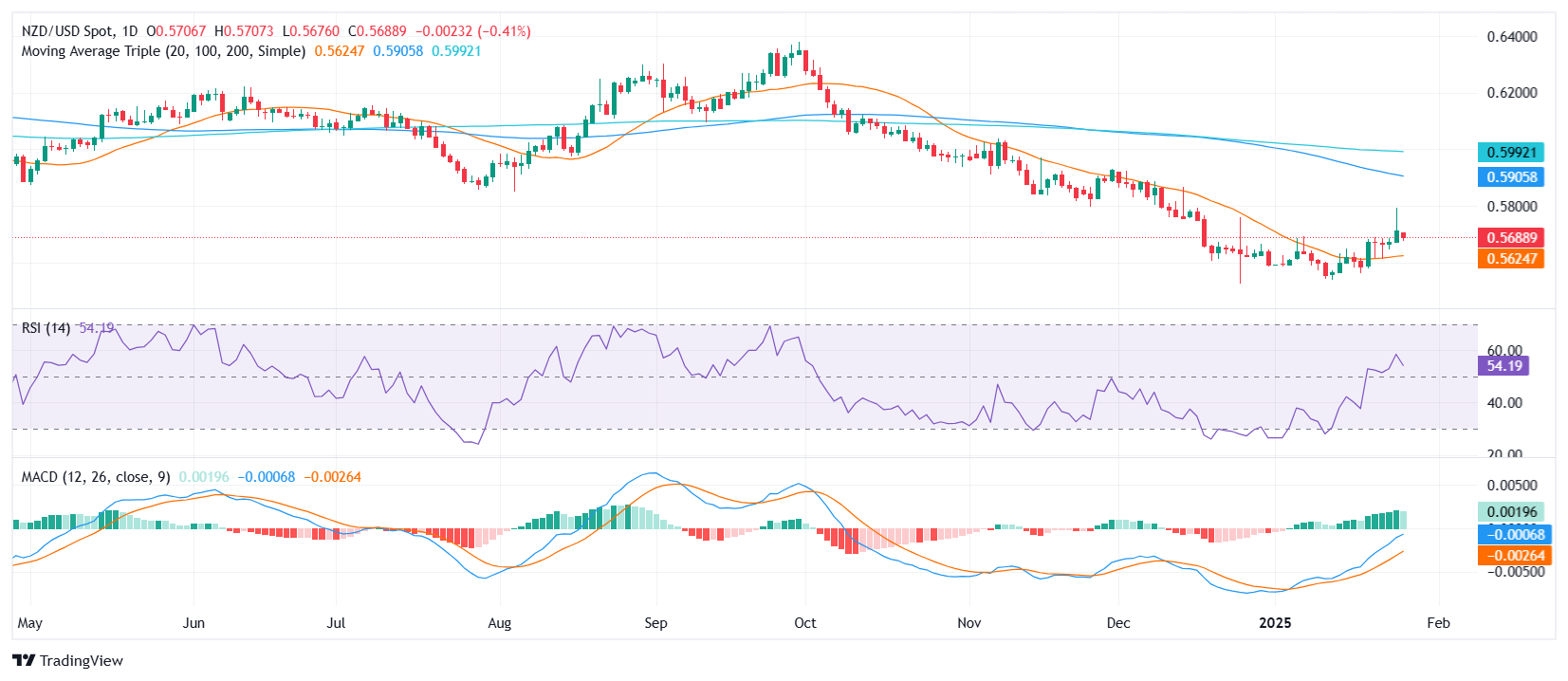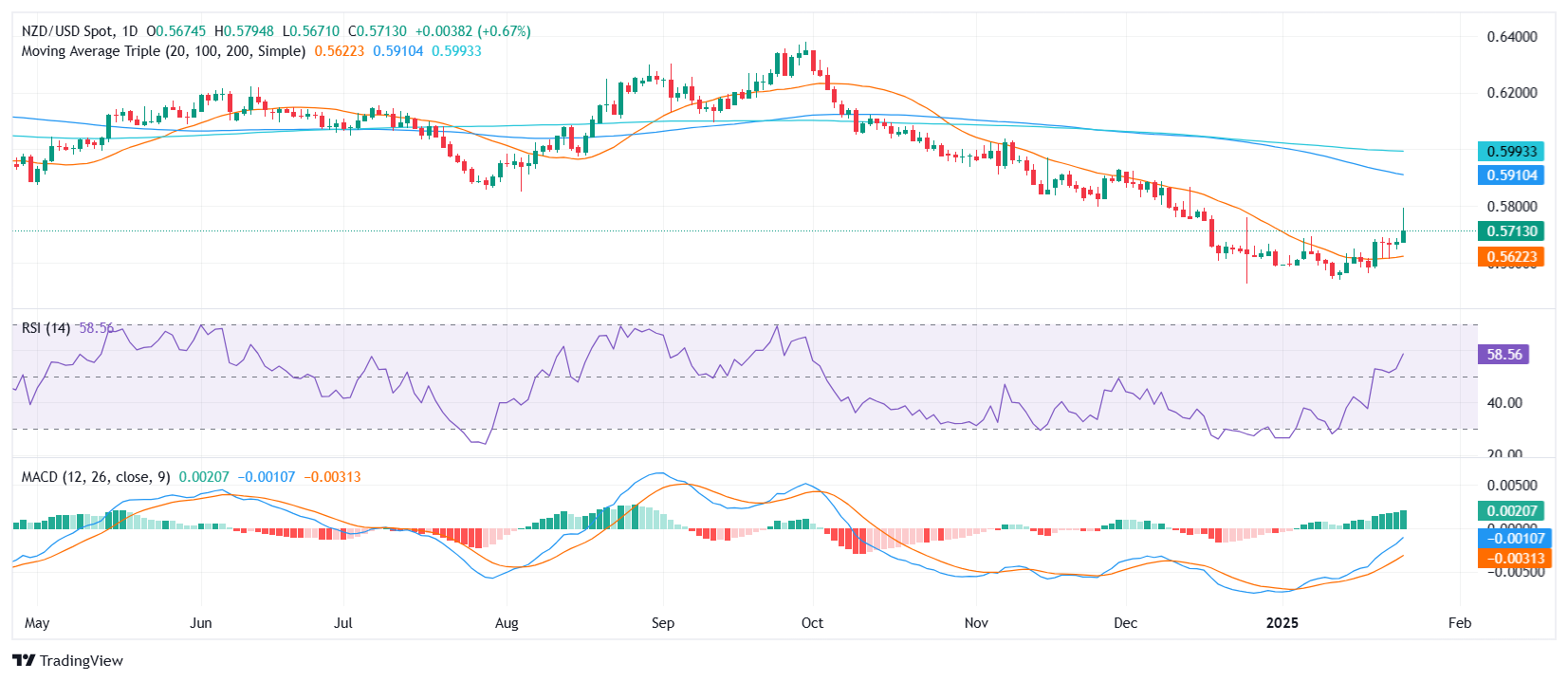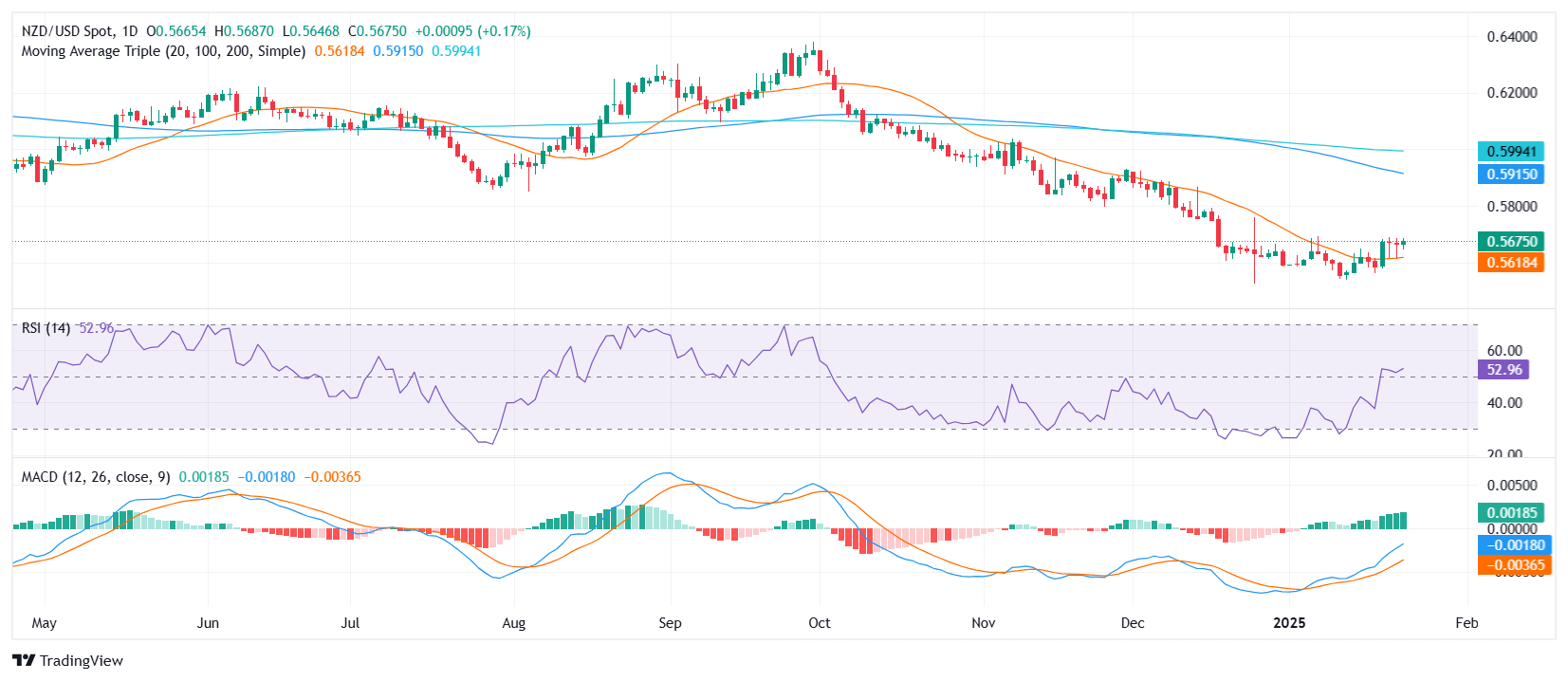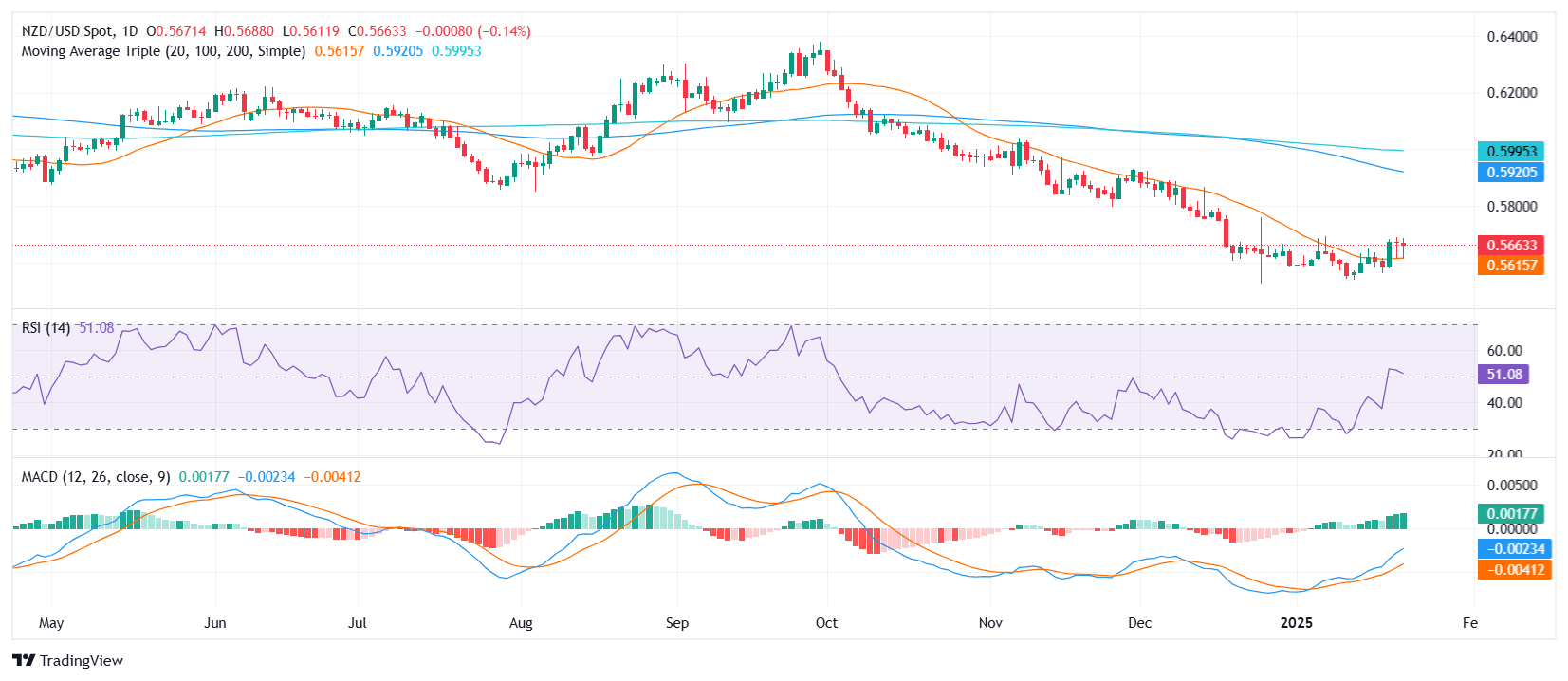- Analytics
- News and Tools
- Quotes
- Chart and quotes for NZDUSD
CFD Trading Rate New Zealand Dollar vs US Dollar (NZDUSD)
| Date | Rate | Change |
|---|
Related news
-
29.01.2025 10:17NZD/USD is range-bound around 0.5670 – BBH
RBNZ Chief Economist Conway stuck to bank’s dovish guidance, BBH FX strategists report.
RBNZ/Fed policy trend remains drag for NZD/USD
“Conway noted that ‘easing domestic pricing intentions and the recent drop in inflation expectations help open the way for some further easing”, adding he anticipates “interest rates to ultimately settle around neutral’.”
“The RBNZ estimates the long-term nominal neutral interest rate to lie between 2.5% and 3.5%. In line with RBNZ guidance, markets continue to imply another 50bps rate cut to 3.75% in February and the policy rate to bottom at 3.00% over the next 12 months. RBNZ/Fed policy trend remains drag for NZD/USD.”
-
29.01.2025 07:54NZD/USD depreciates to near 0.5650 ahead of Fed policy decision
-
29.01.2025 00:19NZD/USD extends downside to near 0.5650 as traders await Fed rate decision
-
28.01.2025 21:40NZD/USD Price Analysis: Bulls take a breather and step back
-
28.01.2025 08:01NZD/USD extends losses to near 0.5650 following new tariff plans from Trump
-
28.01.2025 00:47NZD/USD faces some selling pressure below 0.5700 as Trump tariff threat looms
-
27.01.2025 20:53NZD/USD Price Analysis: Pair retreats to 0.5685 and approaches key support
-
27.01.2025 08:30NZD/USD holds losses below 0.5700 following news of Trump tariffs
-
27.01.2025 01:19NZD/USD weakens below 0.5700 on Trump tariff uncertainty
-
24.01.2025 20:49NZD/USD Price Analysis: Pair extends gains and settled around 0.5705, momentum builds
-
24.01.2025 08:11NZD/USD surges to near 0.5700 on Trump’s friendly talk with China
-
24.01.2025 01:19NZD/USD holds below 0.5700 on Trump’s tariff plans, dovish RBNZ bets
-
23.01.2025 21:58NZD/USD Price Analysis: Pair stabilizes near recent highs, bulls present
-
23.01.2025 10:09NZD/USD: To trade between 0.5640 and 0.5685 – UOB Group
-
23.01.2025 08:30NZD/USD drops to near 0.5650 as US Dollar appreciates ahead of Initial Jobless Claims
-
23.01.2025 01:44NZD/USD gathers strength above 0.5650 as China unveils fresh stimulus measures
-
22.01.2025 21:46NZD/USD Price Analysis: Pair struggles to find direction within range
-
22.01.2025 09:41NZD/USD: Likely to trade between 0.5620 and 0.5690 – UOB Group
-
22.01.2025 07:25NZD/USD falls to near 0.5650 following inflation data, focus on Trump’s tariff plans
-
22.01.2025 00:17NZD/USD weakens to near 0.5650 as Trump threatens tariffs on China
© 2000-2025. All rights reserved.
This site is managed by Teletrade D.J. LLC 2351 LLC 2022 (Euro House, Richmond Hill Road, Kingstown, VC0100, St. Vincent and the Grenadines).
The information on this website is for informational purposes only and does not constitute any investment advice.
The company does not serve or provide services to customers who are residents of the US, Canada, Iran, The Democratic People's Republic of Korea, Yemen and FATF blacklisted countries.
Making transactions on financial markets with marginal financial instruments opens up wide possibilities and allows investors who are willing to take risks to earn high profits, carrying a potentially high risk of losses at the same time. Therefore you should responsibly approach the issue of choosing the appropriate investment strategy, taking the available resources into account, before starting trading.
Use of the information: full or partial use of materials from this website must always be referenced to TeleTrade as the source of information. Use of the materials on the Internet must be accompanied by a hyperlink to teletrade.org. Automatic import of materials and information from this website is prohibited.
Please contact our PR department if you have any questions or need assistance at pr@teletrade.global.




















